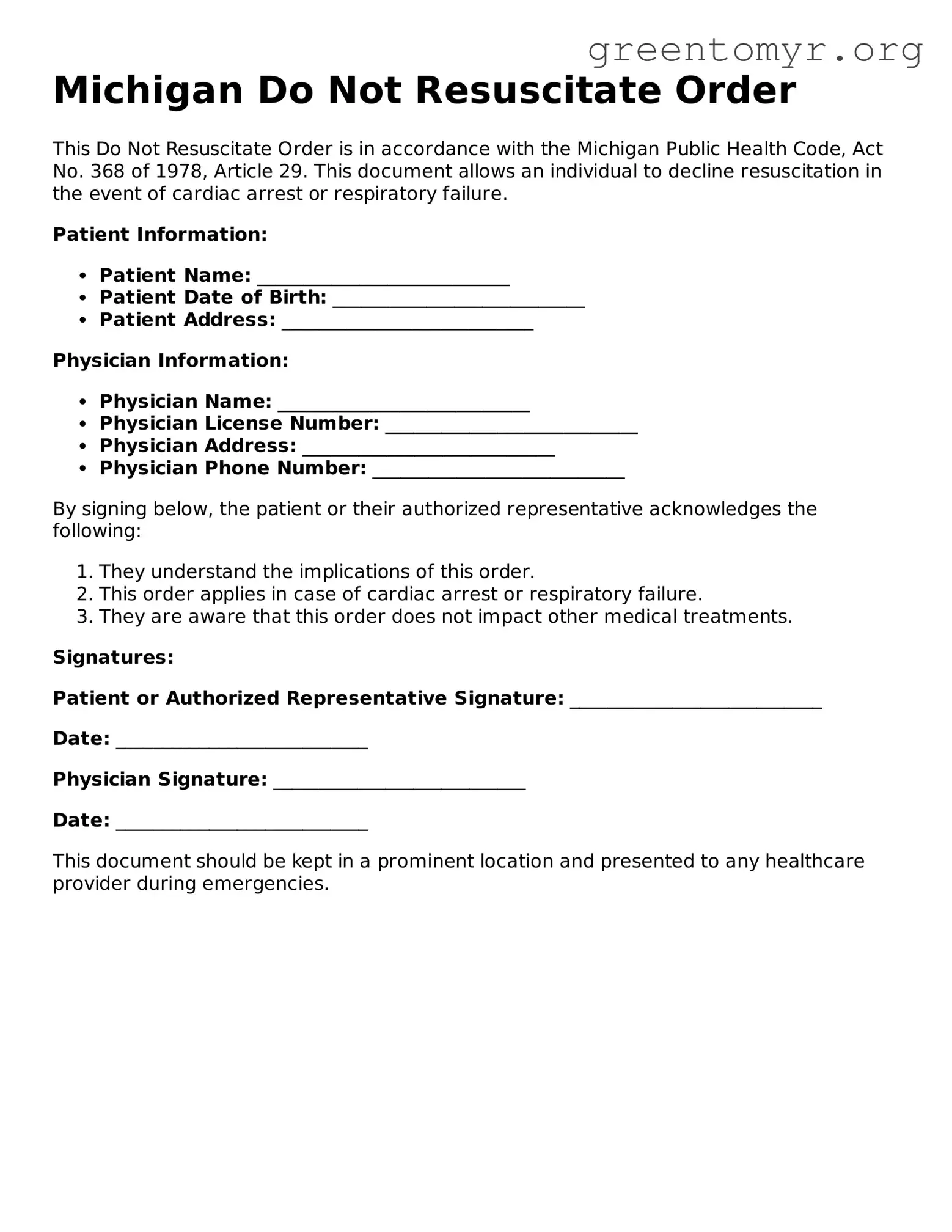Michigan Do Not Resuscitate Order
This Do Not Resuscitate Order is in accordance with the Michigan Public Health Code, Act No. 368 of 1978, Article 29. This document allows an individual to decline resuscitation in the event of cardiac arrest or respiratory failure.
Patient Information:
- Patient Name: ___________________________
- Patient Date of Birth: ___________________________
- Patient Address: ___________________________
Physician Information:
- Physician Name: ___________________________
- Physician License Number: ___________________________
- Physician Address: ___________________________
- Physician Phone Number: ___________________________
By signing below, the patient or their authorized representative acknowledges the following:
- They understand the implications of this order.
- This order applies in case of cardiac arrest or respiratory failure.
- They are aware that this order does not impact other medical treatments.
Signatures:
Patient or Authorized Representative Signature: ___________________________
Date: ___________________________
Physician Signature: ___________________________
Date: ___________________________
This document should be kept in a prominent location and presented to any healthcare provider during emergencies.
